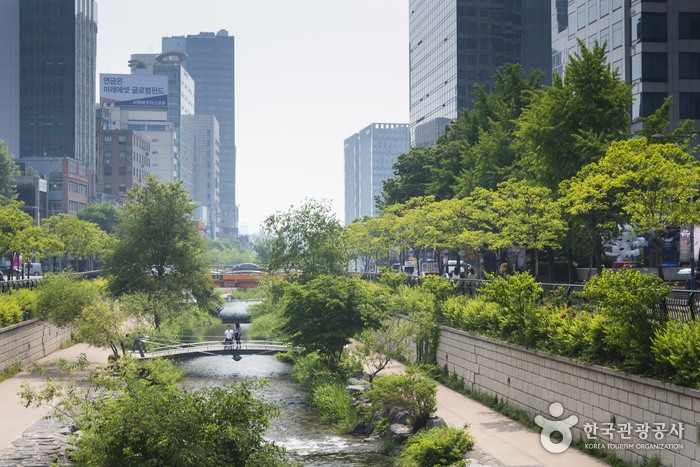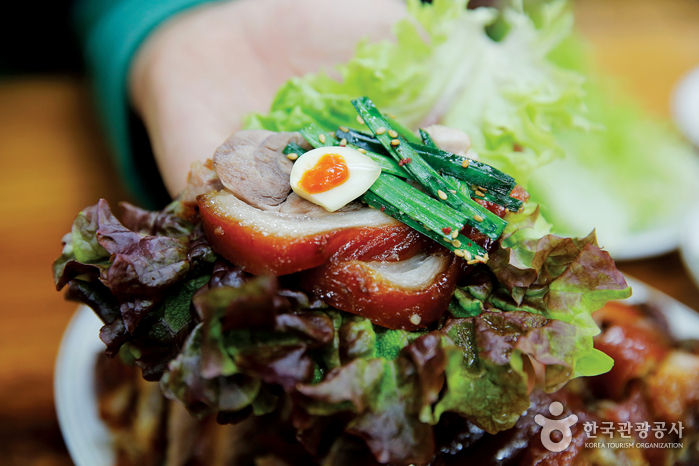Sleep & Sleep [Tax Refund Shop] (슬립앤슬립)
18.1Km 2024-06-27
2F, 20, Jangchungdan-ro 13-gil, Jung-gu, Seoul
-
Lloyd - Hyundai City Outlets Dongdaemun Branch [Tax Refund Shop] (로이드현대시티아울렛동대문점)
18.1Km 2024-06-27
20, Jangchungdan-ro 13-gil, Jung-gu, Seoul
-
Funicut [Tax Refund Shop] (퍼니컷)
18.1Km 2024-06-28
B1, Hyundai City Outlet Dongdaemun Branch, 20, Jangchungdan-ro 13-gil, Jung-gu, Seoul
-
ABC-Mart [Tax Refund Shop] (ABC마트)
18.1Km 2024-06-26
B1, Hyundai City Outlet Dongdaemun Branch, 20, Jangchungdan-ro 13-gil, Jung-gu, Seoul
-
Cheonggyecheon Stream (청계천)
18.1Km 2024-05-16
Changsin-dong, Jongno-gu, Seoul
+82-2-2290-7111
Cheonggye Plaza was built on Sejong-ro Street, where Cheonggyecheon Stream begins. It was built between Dong-A Ilbo, the starting point of the Cheonggyecheon Stream restoration, and Sindap Railroad Bridge, with a length of 160 meters, a x_width of 50 meters, and a total area of 6,962 meters squared. The plaza is decorated with fountains, waterfalls, and walking paths. It was created as a place for meetings, harmony, peace, and unification, to celebrate the significance of the restoration of Cheonggyecheon Stream. A miniaturized version of Cheonggyecheon Stream is displayed here, providing an overview of the restored stream. There are also interpretive panels about the 22 bridges that cross Cheonggyecheon stream. Fountains of various shapes create beautiful scenery. Cheonggyecheon Stream is accessible from the square through stairs on the left and Cheonggye Trail on the right. There is also an 18-meter tunnel on the Cheonggye Trail, providing a unique experience for citizens entering Cheonggyecheon Stream from the plaza. After constructing Cheonggyecheon Plaza, the Seoul Metropolitan Government made it a car-free street on public holidays so that the plaza, waterside area, and streets could be used as cultural spaces for citizens to relax. A spectacular sight is created by three-color lights illuminating the fountains and a two-tiered waterfall coming down from a x_height of four meters. Palseokdam, made of eight stones from eight provinces in Korea, was laid along the waterfall's sides.
Seongsu Jokbal (성수족발)
18.1Km 2021-03-24
7, Achasan-ro, 7-gil, Seongdong-gu, Seoul
+82-2-464-0425
It is considered one of Seoul's top 3 Jokbal (pig’s feet) restaurants. This Korean dishes restaurant is located in Seongdong-gu, Seoul. The most famous menu is braised pigs' feet.
Seoul Museum of Craft Art (SeMoCA) (서울공예박물관)
18.1Km 2025-06-19
4 Yulgok-ro 3-gil, Jongno-gu, Seoul
The Seoul Museum of Craft Art (SeMoCA), the first public museum of craft art in Korea, opened its doors in Anguk-dong, Jongno-gu, in July 2021 after renovating five buildings of the former Pungmoon Girls’ High School. SeMoCA studies and shares not only works, but also information, records, people, and environment related to craft art with the goal of becoming a dynamic platform for experiencing the technical, practical, artistic, and cultural values of craft.
SeMoCA holds a collection that comprises various crafts and craft materials covering multiple fields and eras from the traditional to the present. SeMoCA also holds exhibitions that feature the history of craft from traditional to contemporary art as well as local and children’s crafts, along with programs that utilize the museum’s craft installations, craft archives, craft library, and craft resource management system.
The site of the museum has deep historical roots as it is also the Andong Secondary Palace Site, where a detached palace was constructed as a royal residence for King Sejong’s son Prince Yeongeung, and served as a venue for royal celebrations, such as the wedding of King Sunjong. The site is also at the center of Jongno-gu, where Joseon-era master artisans (“gyeonggongjang”) of the royal palace produced and delivered craft works.
![Marui Home [Tax Refund Shop] (마루이홈)](http://tong.visitkorea.or.kr/cms/resource/51/3314651_image2_1.jpg)
![Corelle [Tax Refund Shop] (코렐)](http://tong.visitkorea.or.kr/cms/resource/40/3313240_image2_1.jpg)
![Silit [Tax Refund Shop] (실리트)](http://tong.visitkorea.or.kr/cms/resource/54/3313354_image2_1.jpg)
![Sleep & Sleep [Tax Refund Shop] (슬립앤슬립)](http://tong.visitkorea.or.kr/cms/resource/13/3314713_image2_1.jpg)
![Lloyd - Hyundai City Outlets Dongdaemun Branch [Tax Refund Shop] (로이드현대시티아울렛동대문점)](http://tong.visitkorea.or.kr/cms/resource/20/2888920_image2_1.jpg)
![Funicut [Tax Refund Shop] (퍼니컷)](http://tong.visitkorea.or.kr/cms/resource/35/3312835_image2_1.jpg)
![ABC-Mart [Tax Refund Shop] (ABC마트)](http://tong.visitkorea.or.kr/cms/resource/67/3313367_image2_1.jpg)


 English
English
 한국어
한국어 日本語
日本語 中文(简体)
中文(简体) Deutsch
Deutsch Français
Français Español
Español Русский
Русский